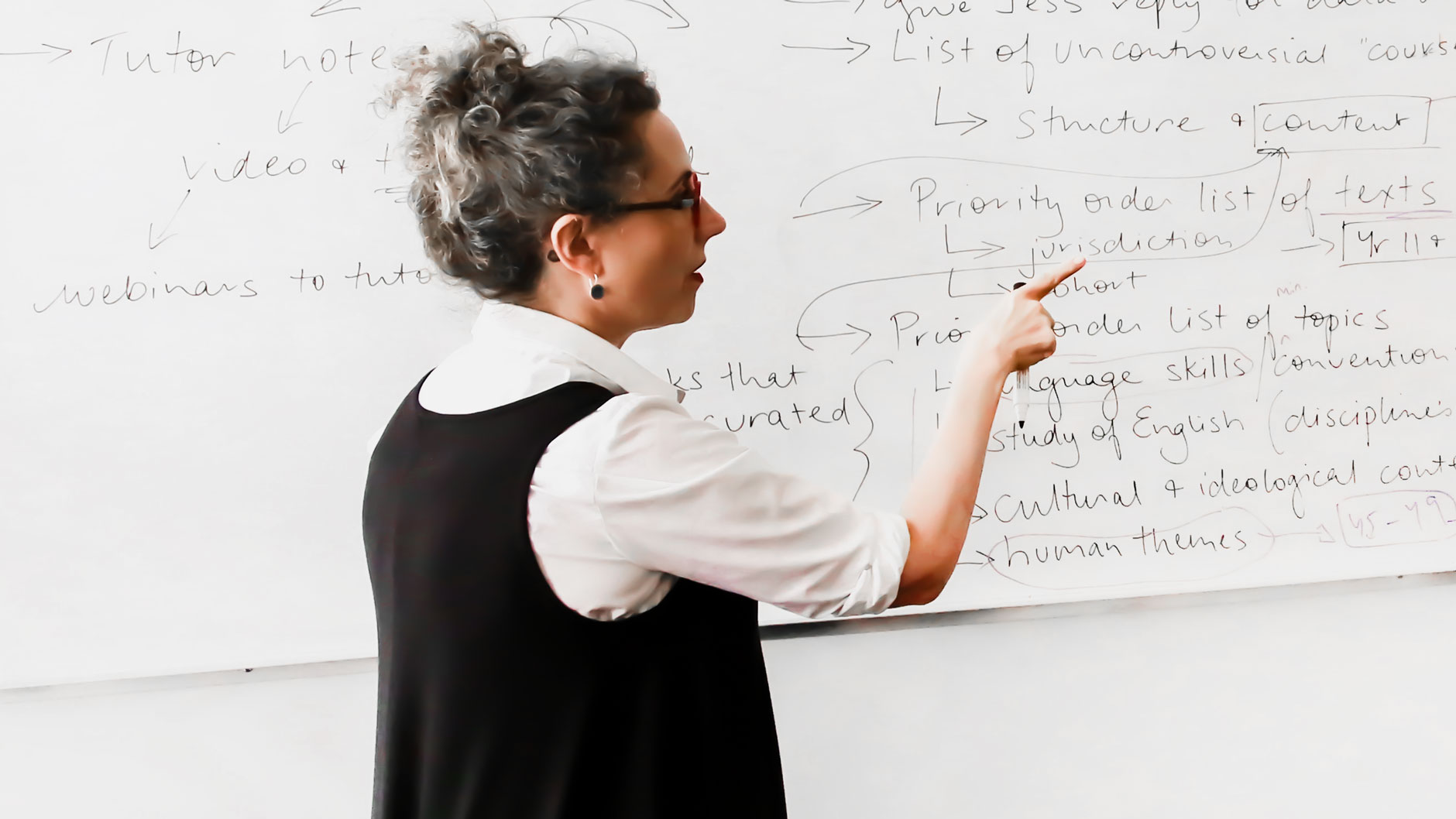At Cluey, we believe that relevance absolutely underpins quality content. The content and program that it belongs to must be as useful as possible to each individual student. Cluey’s content programs are mapped to the National Curriculum and take into account state variations; they’re aligned with what each student is doing at their particular school, and they’re appropriate to each person’s learning needs and goals.
Mapping content to the right curricula
The National Curriculum is at the heart of our programs in every subject from Years 3 to 10. When we review the different syllabi across the country, we take into account state-by-state variations, which allows us to build state-specific programs for our students up to and including Year 12.
To build the primary English programs, for example, we distill and integrate the essential components of the three strands of the Year 3-6 National Curriculum. These are language, literature and literacy. Students have an opportunity in each session to develop their knowledge of how the English language works, to respond to and examine literature, to analyse and evaluate text and to create it. This translates to reading, comprehension, grammar and punctuation and writing.
The important thing is that the sequence – the order in which students tackle the content in any subject – is meaningful and contextualised within a program that’s mapped to the curriculum.
Aligning content with what’s being studied at school
For most of our students, the key to relevance is ensuring that what they learn with Cluey aligns with the subject matter they’re covering in class. For example, if a student’s main focus with us is to improve their essay-writing skills, it’s much more meaningful to apply the skills of essay writing to a question on, say, Macbeth or whatever text they’re studying in class, rather than to learn a generic scaffold to apply in the abstract.
We’ve devised a way to customise the secondary English program to accommodate the text and unit a student is studying at school, giving them and their tutor access during sessions to a range of targeted and relevant learning content. This includes syllabus rubrics – particularly useful for more senior students — example responses, textual analysis and other helpful tips. Students are also encouraged to ask for help with their schoolwork, and can upload specific tasks to discuss with their tutor.
Considering the needs of each student
We always aim to meet our students where they are. This means understanding their learning profile so that we can fill gaps if necessary and build on their current knowledge, ensuring that every student is challenged and extended.
Given how diverse learners can be, this will look different for every student, which is why our content has to be fully differentiated. This may mean, as in primary English, that tasks vary so that students can take different pathways within the same program. It could be that students are assigned customised courses depending on their learning needs, as well as the content they’re covering in school.
We encourage all our students to define their broader learning intentions and aspirations at the beginning of their enrolment and to refine these as they progress. We also set learning goals at the beginning of each session and reflect on them at the end so that students begin to understand and take responsibility for their learning.
Making Cluey content engaging
When we think of engaging content, we often think about content that’s fun, interactive or relatable. We picture colourful pages that catch the eye. Such content may well be engaging, but we need to consider it from the point of view of learning. To us, engaging content is relevant content. Students themselves should recognise its value.
Sequence is fundamental to engagement. In the spirit of meeting each student where they’re at on their learning journey, content should embody educational building blocks. Students shouldn’t be thrown in the deep end. Nor should they feel like the training wheels have been put back on. Engaging, relevant content needs to take into account what a student already knows and build on that in the appropriate order. It should allow for some early wins and then provide enough reiteration and challenge that gaps in learning and extension are accommodated within the same program.
A very important component of quality content is that it positions students as active learners when they use it. The best content is not merely designed to be consumed in a passive way, i.e. read and reread but not absorbed, but should frame and stimulate certain behaviours that help to embed learning. Ultimately, the most engaging content poses authentic questions that require our students to think and to demonstrate their understanding so that we can provide each of them with appropriate, meaningful feedback and support.
